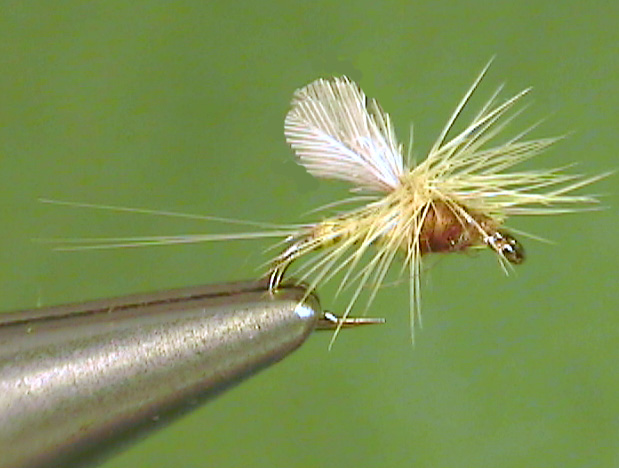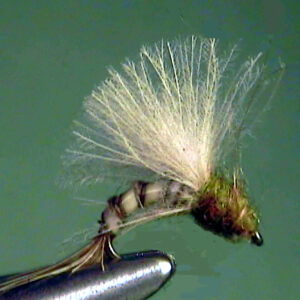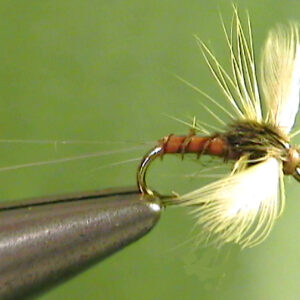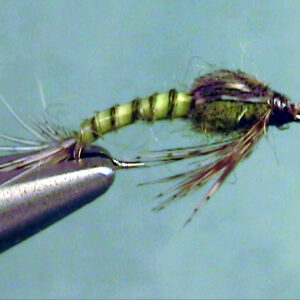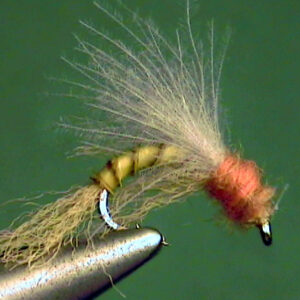Hook Size: 16
The Perfect Fly Little Yellow Quill Dun is an excellent imitation of the adult stage of life of the mayfly. It imitates the mayfly as it drifts or floats on the surface, drying it wet wings enough to fly off the water onto the banks, bushes or trees where it will eventually change into the spinner stage of life. It even imitates the dun down to two or three tails and it two upright wings. It is fished on the surface as a dry fly. It should be treated with floatant.
Since the Yellow Quill duns normally leave the water fairly quickly, fishing our dun
imitation may not be as effective as fishing our emerger pattern but trout do eat the duns
on the surface. At some locations in the east and depending on the particular species,
these mayflies may hatch later in the year in colder water. That’s is when the dun will
usually outperform the emergers. The dun will catch trout anytime there’s a hatch but we
are providing you information on what should be the most productive or effective fly.
Most anglers would prefer to fish a dry fly over an emerger, nymph or wet fly because of
the visual, exciting action a dry fly provides. Our biot body, split tail imitation of this dun is
very effective because the trout get a good opportunity to closely examine these mayflies
in the shallow, low, clear water they hatch in.
Presentation:
An upstream presentation in shallow, slower moving water near ripples and runs would
probably be the best approach. Often the water is low in the summer and early fall and
long light leaders are required for this fly to be effective. You should approach the areas
where the Little Yellow Quills are hatching as carefully as possible and make as good of a
presentation as possible under low water conditions. It is very important to stay hidden
from the trout under these tougher conditions.
If the fishing is real tough and you are spooking more trout than you are fishing you may
need to make a down and across presentation. This is not exactly easy in some of the
small freestone streams where the Little Yellow Quills hatch but may be necessary in
order to be successful.
